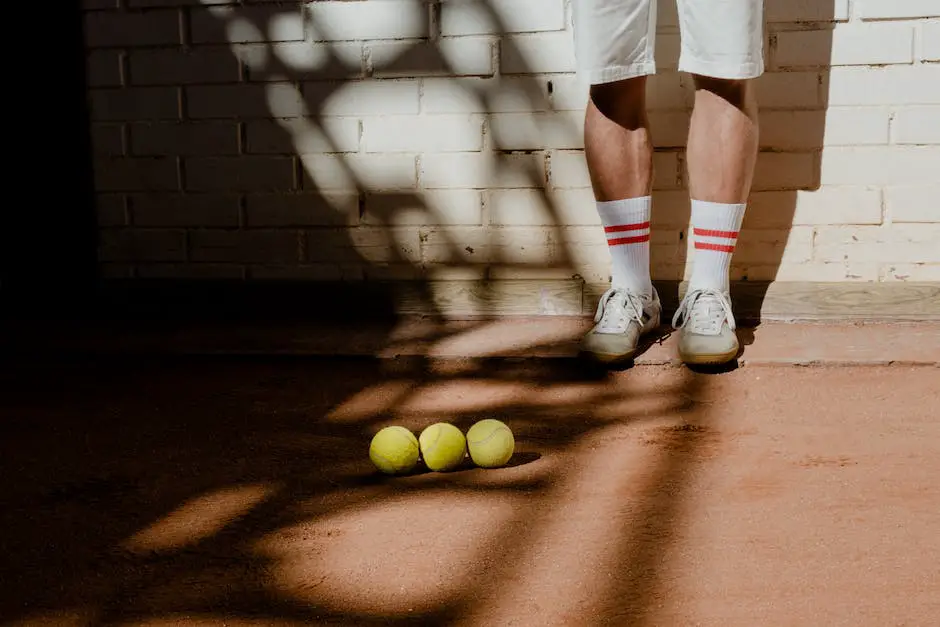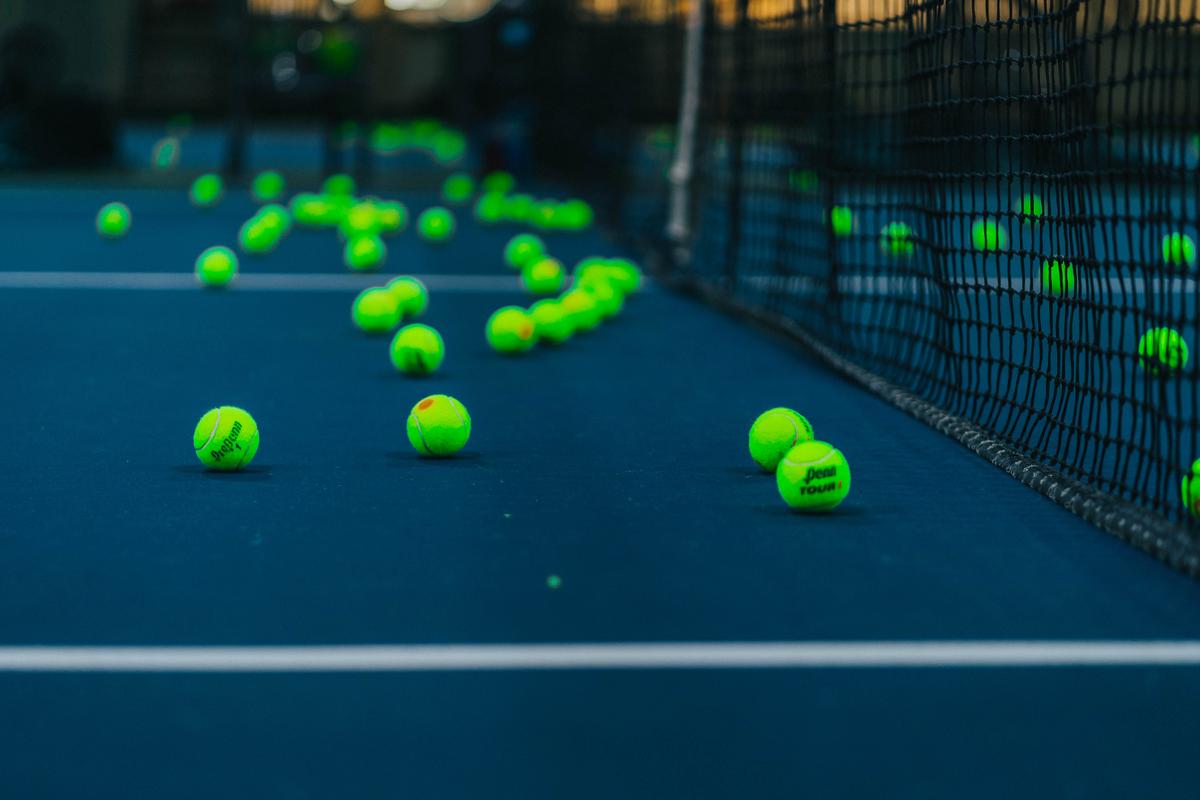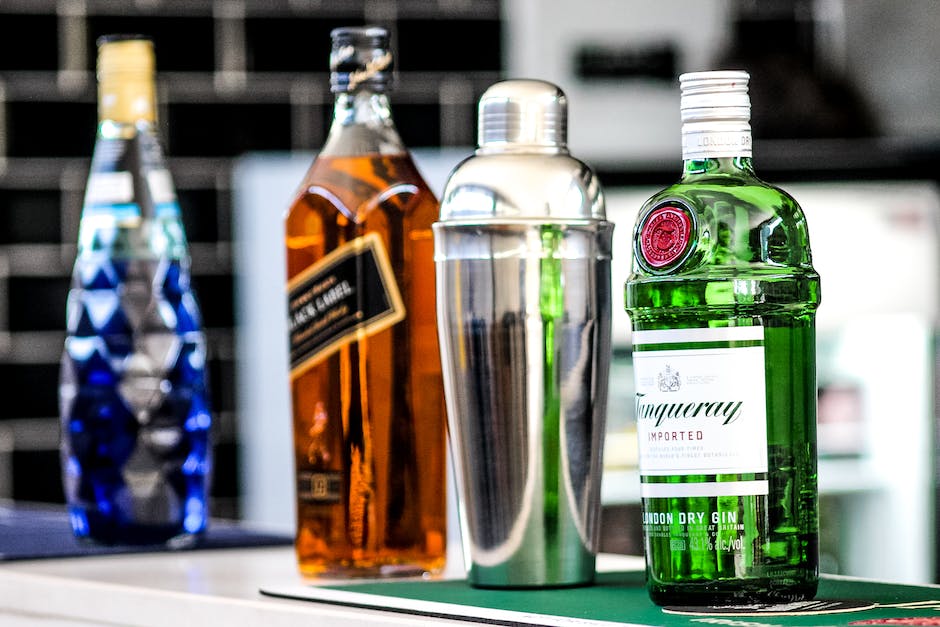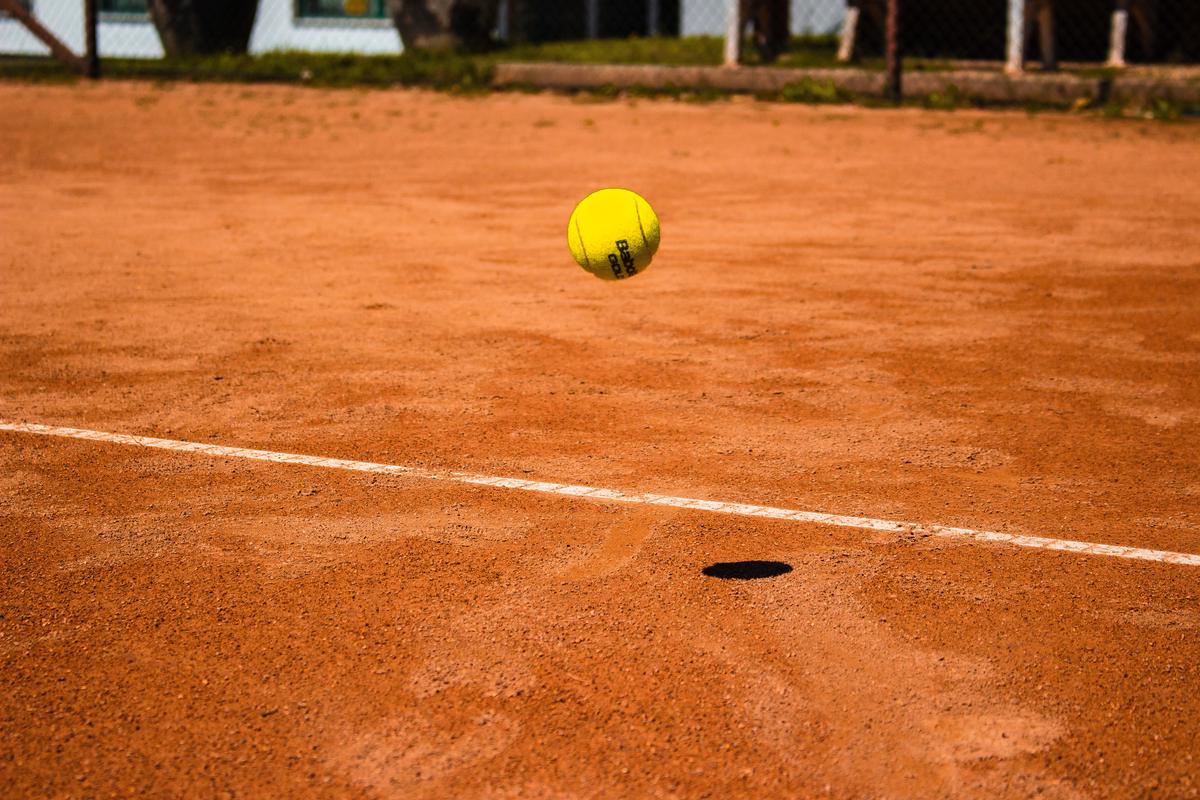The game of tennis, although seemingly simple at a glance, has countless intricacies and factors that go into its play; one of those being the very tool of the game: the tennis ball. Unbeknownst to many, tennis balls are not universal–they come in different types, each with its own purpose, manufacturing process, and materials. This vast variability greatly influences the game’s dynamics, player performance, cost considerations, and even environmental implications. Whether you are a seasoned player, a novice, or simply a curious onlooker, gaining in-depth knowledge about tennis balls can broaden your understanding of this beloved sport.
Tennis Ball Materials
Tennis Ball Materials: Core and Outer Coating Considerations
Tennis balls, a critical component of the game, are complex pieces engineered with specific materials to ensure optimal performance. They are typically composed of two main components: the core and the outer coating or felt.
The core of a tennis ball is traditionally produced from rubber, filled with pressurized air or nitrogen. The thickness and consistency of rubber used, along with the type and pressure of the gas filled inside, play significant roles in defining the ball’s bounce and speed. Two types of cores exist: pressurized and non-pressurized. Pressurized cores contain air or nitrogen, enabling the ball to bounce higher and travel faster. Non-pressurized cores lack this internal pressure and are made of denser rubber, resulting in less bounce and slower speeds, yet offering greater durability.
The Impact of Ball Core on Performance and Durability
Pressurized tennis balls produce a more responsive bounce and deliver a superior level of performance, particularly at the professional level where precision and speed are paramount. However, pressurized balls tend to lose their bounce more quickly because the internal air or nitrogen escapes over time, leading to a decline in performance. This loss of pressure usually mandates frequent replacement, making these balls less desirable for casual or infrequent players due to their reduced lifespan.
Non-pressurized balls are a popular choice for recreational players or those learning the sport. They maintain their bounce over a longer period as they don’t rely on internal pressure, but rather, the hardness of their rubber core. Therefore, they are deemed more durable, cost-effective, and suitable for extended training sessions or practice matches.
The Role of the Outer Coating in Tennis Balls
The outer coating of a tennis ball is typically made of felt, which is a blend of wool and nylon or other synthetic fibers. The purpose of this coating is to provide a rough surface that enables the ball to spin when it is struck, resulting in greater control and accuracy for players. Furthermore, the type and thickness of the felt influence the speed and flight of the ball.
Different types of felt can also impact the durability of the ball. Heavy-duty felt, usually a blend of wool and nylon, is more resistant to wear and tear and is often used in balls designed for hard court play. Regular-duty felt, softer and less dense, is ideal for clay or indoor courts.
Variables such as the materials used in a tennis ball – inclusive of its core and outer coating – significantly influence its speed, bounce, and overall performance. Consequently, these factors are pivotal in the decision-making process when players, clubs, and associations need to select balls for practice rounds or even competitive matches. The most suitable tennis ball for a game or player is determined by the perfect balance and mix of these elements.

Types of Tennis Balls
Understanding Regular Duty Tennis Balls
Made for optimal performance on clay and indoor surfaces are regular duty tennis balls. These balls come with a mildly less fuzzy surface. This characteristic helps prevent the ball from picking up too much clay, dirt, or indoor court dust, thus ensuring the bounce and flight path of the ball remain unaffected. When placed side by side with extra-duty tennis balls, these balls are less prone to ‘fluffing up,’ which helps maintain their aerodynamics. A word of caution, though, regular duty balls may wear out relatively quicker if used on hard court surfaces. Hence, they’re generally favored by those playing on softer or indoor courts. Notably, these balls are the choice of the WTA and ATP tours for all clay court events.
Extra Duty Tennis Balls
Extra duty tennis balls are characterized by their thicker and denser felt cover, which makes them more durable, an essential consideration for hard surface courts. This type of ball is ideal for outdoor asphalt or concrete courts, and they are designed to withstand the wear and tear that comes with playing on rough surfaces. Their extra fluff allows for better grip on the racquet strings, thus leading to more spin. It’s important to note that extra-duty balls will wear out faster on softer surfaces. These balls are used by the WTA and ATP tours on all hard court events.
High Altitude Tennis Balls
High altitude tennis balls are specifically designed for areas located 3500 feet or more above sea level. In high altitudes, air is less dense which causes regular tennis balls to bounce higher and travel faster than at sea level. High altitude balls counteract this by maintaining a lower internal pressure than normal. This causes them to bounce similarly to regular duty or extra-duty balls at sea level. These adjustments give players a comparable playing experience to that at lower elevities. Most manufacturers produce high altitude versions of their regular and extra duty balls.
Pressureless Tennis Balls
Pressureless tennis balls are a unique type within the range of tennis balls. Unlike other tennis balls which are filled with air or gas, pressureless balls rely on their rubber core for bounce. This makes them less responsive and harder to the touch when they’re new. However, as the felt cover wears off over time, they become more bouncy. They are particularly popular for use in tennis ball machines and for recreational play because they last longer than pressurized balls.
Understanding Junior Tennis Balls
Commonly referred to as kids or starter balls, junior tennis balls are classified into three subdivisions. These are stage 1 (green dot), stage 2 (orange dot), and stage 3 (red dot). The design of these balls is purposefully slow and low in bounce to aid beginners, specifically children, in hitting and controlling the ball with ease. For complete novices, the stage 3 balls are ideal due to their remarkably low bounce. Children with slightly more experience might find the stage 2 balls more compatible as they bounce a bit higher, and stage 1 balls are closest to standard balls in terms of speed and bounce but remain manageable for young players.

Tennis Ball Manufacturing Process
The Manufacturing Process: Gathering Essential Materials
The creation of tennis balls involves the use of several crucial materials. First up, the center or core of the ball typically consists of pressurized air or nitrogen, a key element in maintaining ball pressure, which determines bounce characteristics. Next, rubber is used to form two hollow half-shells that function as the vessel for the core gas. Lastly, the rubber shells are covered with a felt-like fabric often made up of a blend of wool and synthetic fiber. This tri-part material composition is what gives a tennis ball its unique characteristics.
Molding Process
Following the material gathering stage, these rubber half-shells are joined together through a heating process. Heat causes the rubber to soften, allowing two halves to bond together and form a tight seal. It’s worth noting that the thickness and consistency of the rubber used significantly influence the bouncing behavior of the tennis balls.
Gas Injection
Once the rubber ball is formed, it is filled with either compressed air or nitrogen. The choice of gas depends on the aimed characteristics of the ball. Balls injected with nitrogen tend to retain their bounce for a longer period since nitrogen leaks slower through the rubber than air. Moreover, nitrogen-filled balls are less susceptible to pressure changes due to temperature fluctuation and air altitude, which makes them a favored choice for professional tennis matches.
Felt Covering
The next stage involves covering the rubber ball with felt. This cover is designed to improve control over the ball and has far-reaching impact on how the ball travels through the air. Different types of felt can make the ball faster or slower, and can affect the degree to which it spins. Usually, tennis balls are covered with bright fluorescent colors, like neon yellow, to increase their visibility in various light conditions, and indeed across the vibrant green of the tennis court.
Manufacturing Influences
Certainly, the manufacturing process of tennis balls significantly impacts the performance of the balls. For instance, pressurized balls, such as those used in professional games, are known for their high speed and bounce. However, their pressure tends to decline over time, resulting in inconsistent playability. On the other hand, pressureless balls are less vigorous in terms of speed and bounce, but they tend to last longer and provide consistent performance.
Likewise, the texture and composition of the felt utilized can influence the outcome of a match. High-quality felt leads to superior aerodynamics and better control, while lower-grade felt may result in unpredictable ball behavior.
Types of Tennis Balls
Different types of tennis balls are produced to suit different playing circumstances. There are tennis balls made specifically for hard courts, clay courts, and grass courts, each with distinct characteristics. Furthermore, there are also training balls and low-compression balls designed for recreational players and beginners, which are easier to hit and bounce lower, allowing for longer rallies for those still perfecting their technique.
In the wonderful world of tennis, the individual characteristics of each ball can significantly influence the performance on the court. The manufacturing process of tennis balls not only considers the diverse types of court surfaces, but also the varying skill levels of players and numerous conditions under which a match is played. This means that each ball is uniquely designed to meet specific needs.

Photo by hermez777 on Unsplash
Tennis Ball Brands
About Wilson Tennis Balls
Known for their influence in tennis, Wilson is a brand highly revered by fans and professionals alike, with endorsements from renowned figures like Roger Federer and Serena Williams. Wilson tennis balls are particularly acclaimed for their adaptability, offering both regular and extra-duty varieties to suit various courts. A standout characteristic of these balls is their notable durability – they are built to last through multiple matches without losing their bounce or uniform roundness. They also impress with their bright colors, enhancing visibility, and their capacity to resist fluffing. Despite their slightly higher price tag, special edition balls for major tournaments like the US Open and Wimbledon are highly favored by players for their exceptional quality.
Dunlop Tennis Balls
Dunlop balls are known for a superb blend of control and power, qualities that benefit both casual and professional players. Many consider Dunlop tennis balls to offer the best value for money. The brand features a quality rating of 4.5 out of 5 among users, credited to their long-lasting durability and consistent feel. The brand’s Grand Prix model is a popular choice due to its secret rubber core formula designed for longer play, while the Fort All Court ball is known for its HDR Hydroguard technology that repels up to 70% more water than a regular ball, offering superior performance in wet conditions.
Babolat Tennis Balls
Babolat stands out for its unique Quality Tennis System (QTS), which includes balls in three stages named Babolat 1, 2, and 3. This staggered system is designed to suit different player levels or different stages of training, offering a ball for every skill level. Babolat tennis balls are also known to have good spin responsiveness and feel, and this makes them very popular among spin-heavy players in all types of courts. However, Babolat tennis balls are generally more expensive than other brands, attributed to their advanced QTS technology and high-quality fabric.
Penn Tennis Balls
Penn is America’s #1 selling tennis ball brand and is recognized globally for its quality and consistency. The brand’s balls come in regular duty, extra duty, and high altitude variations. Penn tennis balls are endorsed by the USTA and ITF, making them a popular choice for tournaments and professional games. Their Championship balls are known to have a consistent feel over their lifespan and provide excellent bounce on hard courts. The Penn Pro Marathon model is more expensive but is favored by professionals for its long life and playability.
Slazenger Tennis Balls
Slazenger has been the official ball of Wimbledon for over a century, speaking volumes about its quality and reliability. The Slazenger Wimbledon ball, in particular, is known for its ultra-visible cloth and patented Hydroguard technology that repels 70% more water, making them suitable for all weather conditions. This brand is appreciated for its ‘Tour Core’ technology offering consistent performance and longevity. However, the cost of Slazenger balls can be a deterrent for some players, although their excellent play characteristics often justify the price.
About Tecnifibre Tennis Balls
Recognized for their premium tennis balls, Tecnifibre, a French tennis brand, may be relatively new to the market, but it has definitely made its mark. Among their variety of products, the X-One balls have received high praise due to their exceptional spin response and durability. Frequently chosen by professionals, these balls offer a consistent feel and are recognized for their impressive durability. However, this top-tier quality comes with a matching price tag; they’re among the pricier options on the market.

Environmental Impact and Sustainability
Understanding the Environmental Ramifications of Producing Tennis Balls
Like many other sporting goods, tennis ball production carries a significant environmental footprint. This process involves several elaborate steps from sourcing raw materials to the final assembly and packaging. Two of the main components of a tennis ball are rubber and felt, both of which demand energy-intensive methods for extraction and processing. Rubber, for instance, is procured from trees and then undergoes a series of chemical processes before it’s transformed into the bouncy core of a tennis ball. On the other hand, the felt is usually derived from wool, which demands considerable amounts of land, water, and energy to produce.
Additionally, in striving for augmented durability and performance, manufacturers incorporate synthetic materials, which inevitably compound the already great environmental impact. The packaging, while indispensable for preserving the balls’ freshness and bounce, unfortunately contributes to the accumulation of non-biodegradable waste in our landfills.
The Environmental Impact of Tennis Ball Disposal
Disposing of tennis balls has its own adverse effects on the environment. With an average life of just two weeks for regular use, millions of these non-biodegradable balls end up in landfills every year, taking hundreds of years to decompose. Burning them is not a viable solution as it leads to the release of harmful pollutants in the environment.
Sustainability Efforts in the Tennis Ball Industry
Recognizing these issues, the tennis ball industry has undertaken numerous initiatives to minimize their environmental impact. One method has been through the introduction of balls made with more environmentally friendly materials. Some brands have begun exploring the use of sustainable wool, bio-based rubber, and even eco-friendly packaging options to lessen their environmental footprint.
Tennis Ball Recycling Initiatives
On the other end of the lifecycle, recycling initiatives have been gaining traction to deal with the issue of tennis ball disposal. Several local and national programs have been developed to divert used balls from landfills and put them to other uses. For example, some programs have found innovative solutions, such as using worn-out balls as shock absorbers for classroom chairs and walkers. Other initiatives grind the balls and mix them into sports courts or playground surfaces.
Development of Eco-Friendly Tennis Balls
Another significant step in the industry’s path to sustainability is the development of eco-friendly tennis balls. These balls aim to maintain the high performance of traditional tennis balls while utilizing sustainable materials during production. Typically, such balls also come packaged in recyclable containers, ensuring that every phase of their life cycle, from production to disposal, is designed with the environment in mind.
While these tennis balls are relatively new in the market, their development signifies a substantial shift in the industry. It shows a commitment to reducing its environmental impact and promoting an important message of sustainability.
Overall, while the tennis ball industry does have significant environmental concerns, it is actively moving towards more sustainable production and disposal practices. This involves both modifying their current practices and innovating new, less impactful methods of production and disposal.

Photo by mrsamuelelias on Unsplash
As we have detailed throughout these sections, the humble tennis ball plays a fascinating and complex role in the sport of tennis. Its design, composition, and type all have significant impacts on the game’s dynamics. Choosing the right ball can vastly optimize a player’s performance and even extend the lifespan of other tennis equipment. Notably, the manufacture and disposal of tennis balls also pose significant environmental implications, prompting the industry to look towards more sustainable practices. The next time you watch a match or swing your racquet, remember: there’s more to that tennis ball than meets the eye.

I am Michael Wanner, an experienced and educated expert in the field of pickleball. I hold a degree in Sports Science from Cleveland State University, Ohio, USA. My expertise lies in the technical aspects of pickleball and how to play it effectively. I have spent many years playing and coaching pickleball and have a wealth of knowledge to share with my readers. I am a valuable resource for anyone looking to improve their pickleball skills and strategies.
